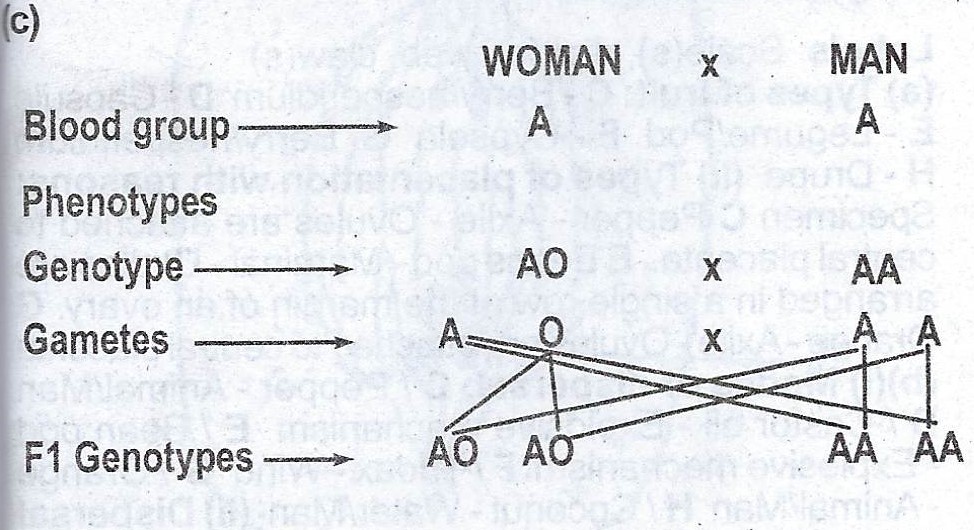(a) List four characteristics which can be genetically transmitted in humans.
(b)(i) Name two sites eac• in plants and animals where meiosis occurs.
(ii) State two differences between meiosis and mitosis
(c) A woman with blood group ‘A’ (heterozygous) claimed that her son who has blood group ‘0’ was fathered by Mr. James who has blood group ‘A’ (homozygous). With the aid of suitable genetic diagrams
(i) prove or disprove the woman’s claim
(ii) give reasons to support your answer.
Explanation
(a) Inheritable characters: -
Skin/hair/eye colour - Blood Group
- voice
Height/structure - Haemophilia
Albino/albinism
Weight Size - Sickle cell anaemia
Colour blindness
Size - Tongue rolling
Intelligence - baldness
(b)(i) Sites of Meiosis: -
In plants:
- antheridium/archegonium.
- Anthers
- Ovary
- sporangium/spore capsule.
In animals
- Testes
- Ovaries
| Mitosis | Meiosis |
| Nucleus divide only once | Nucleus divides twice |
| Number of chromosomes remain the same after division. Diploid | Number of chromosomes is halved after division. Haploid |
| Homologous chromosomes do not associate | homologous chromosome associate to form bivalents |
| chiasmata are never formed | chiamata are formed |
| crossing over never occurs / no exchange of genetic material | crossing over occurs/exchange of genetic material occurs |
| Daughter cells identical to parents cells | daughter cell generally different from parent cell |
| Two daughter cells are formed | four daughter cells are formed |
| chromosomes form single role at the equator | chromosomes form double role at the equator |
| Occurs in somatic cell | occurs in reproductive cell |
| occurs in asexual reproduction | occurs in sexual reproduction |

The woman's claim is wrong.
Reasons
(ii) Half their children are heterozygous blood group A and Half homozygous blood group A
(iii) No child is group 0.

